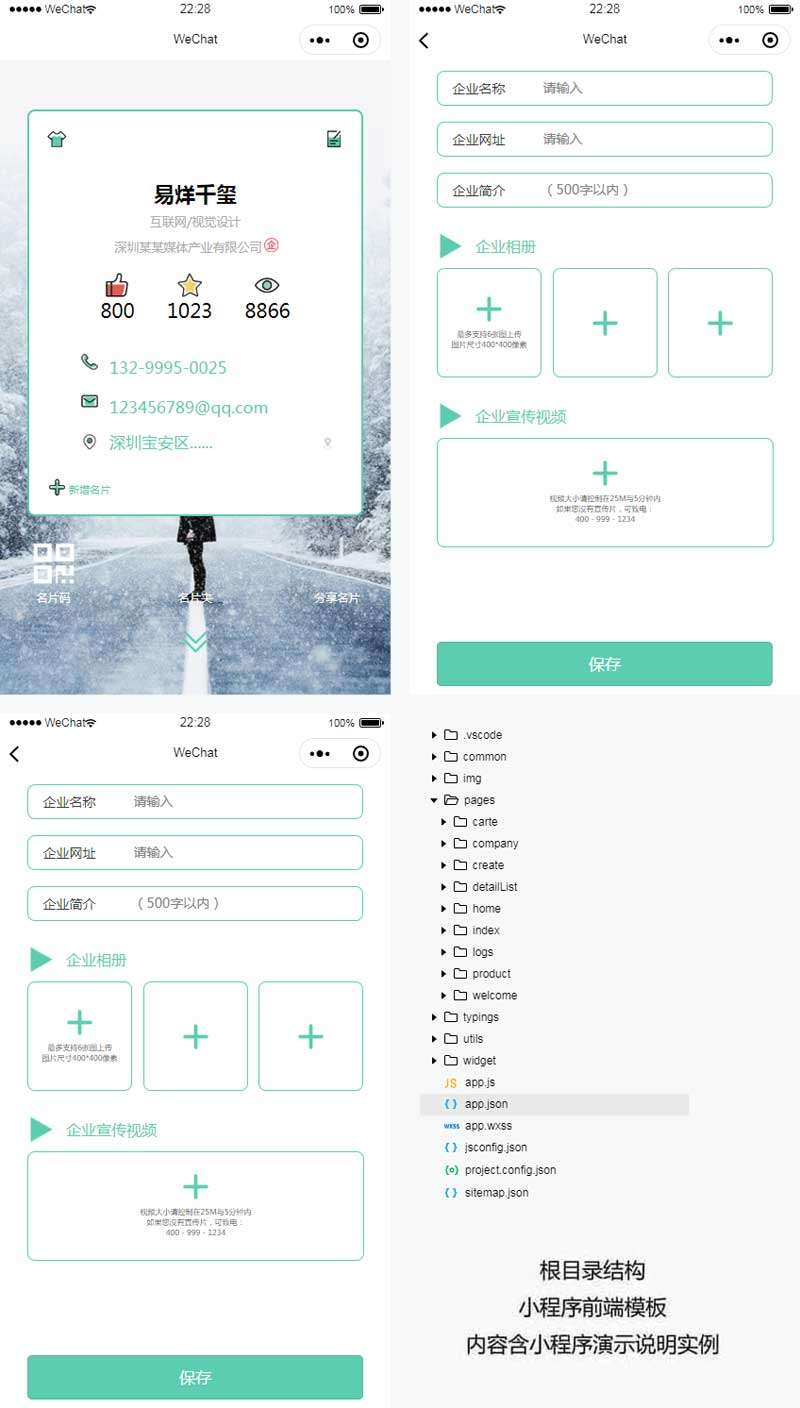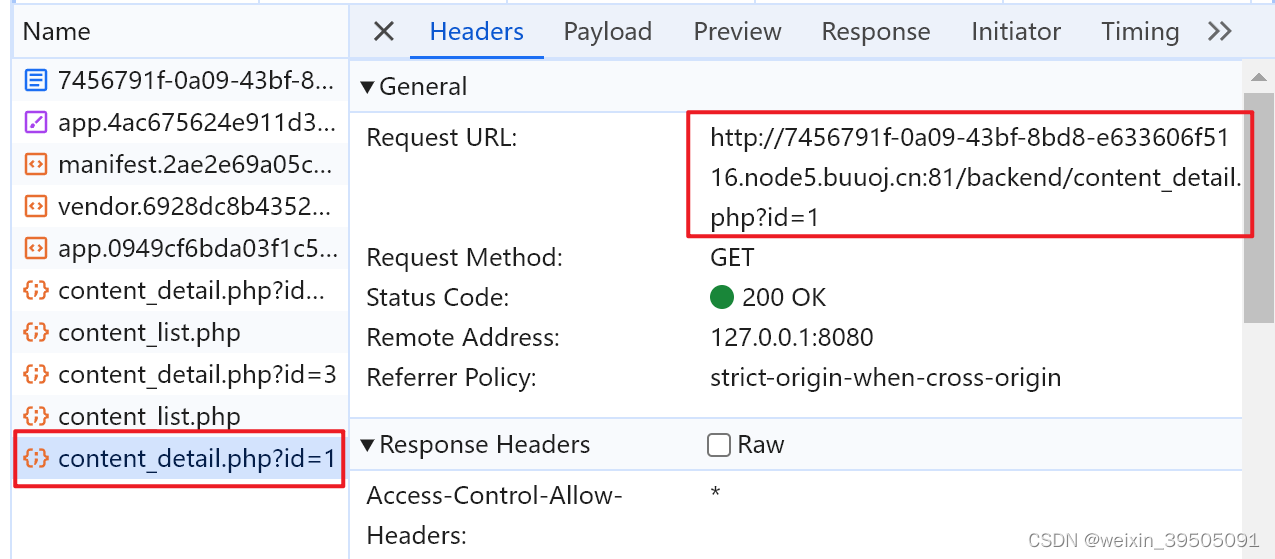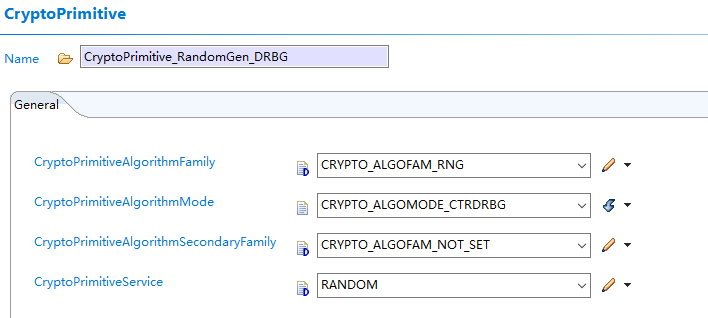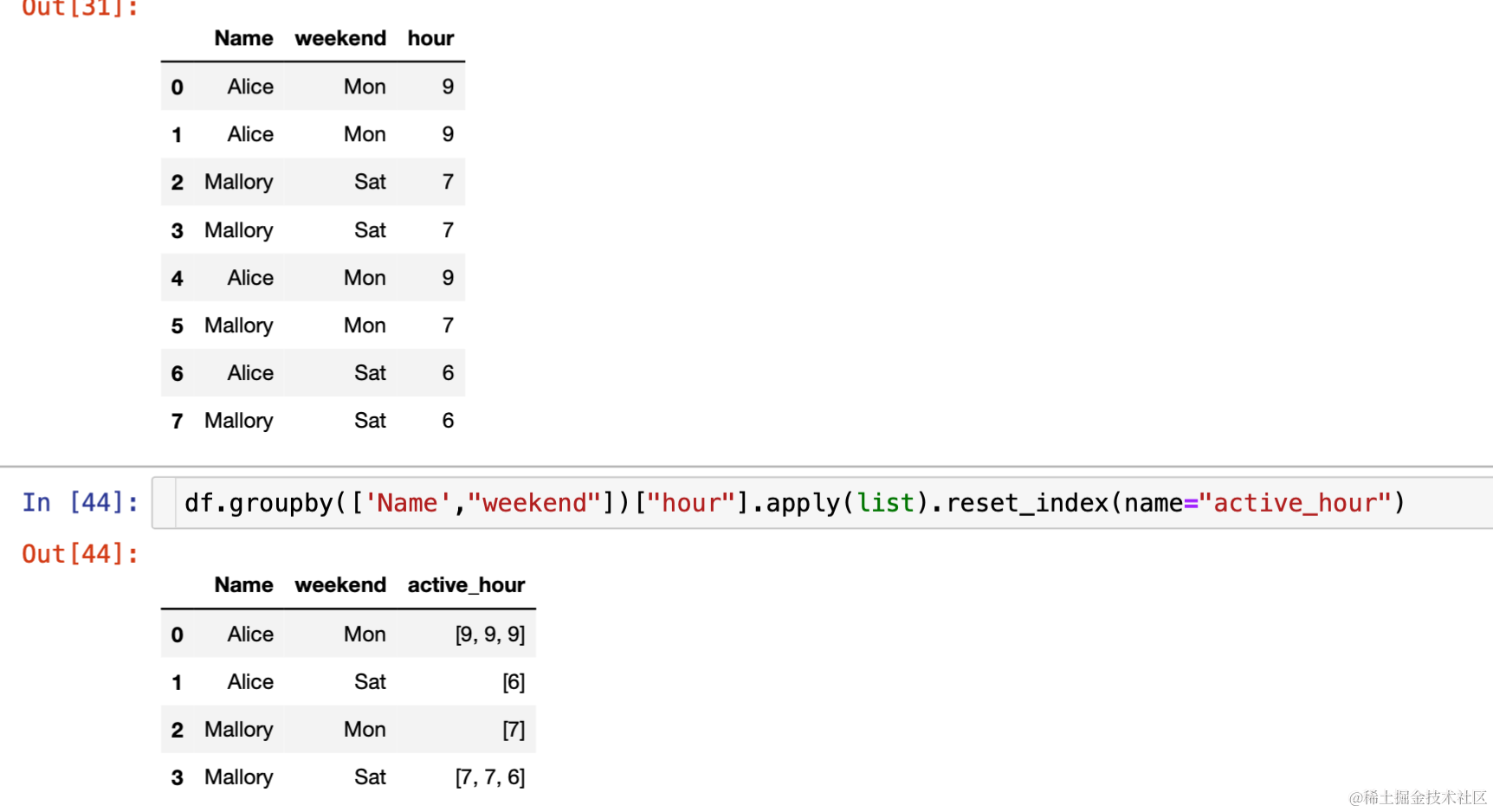本内容是基于江协科技STM32视频整理而得。
1. LED和蜂鸣器
1.1 LED和蜂鸣器简介
LED:发光二极管,正向导通点亮,反向通电不亮
有源蜂鸣器:内部自带振荡源,将正负极接上直流电压即可持续发声,频率固定。
无源蜂鸣器:内部不带振荡源,需要控制器提供振荡脉冲才可发声,调整提供振荡脉冲的频率,可发出不同频率的声音。
1.2 硬件电路

在推挽输出模式下,高低电平均有较强的驱动能力。
但在单片机电路中,倾向于第一种即低电平驱动LED。因为很多单片机或芯片都使用了高电平弱驱动,低电平强驱动的规则。
PNP管,基极给低电平,三极管导通,基极给高电平,三极管截止,蜂鸣器就没有电流。
NPN管驱动电路,基极给高电平,三极管导通,基极给低电平,三极管截止。
点亮LED是使用的GPIO的输出模式,引脚配置为推挽输出。小灯的硬件电路接线采用的是PA0引脚接低电平点亮方式。
1.3 GPIO库函数
**void GPIO_Init(GPIO_TypeDef* GPIOx, GPIO_InitTypeDef* GPIO_InitStruct);**
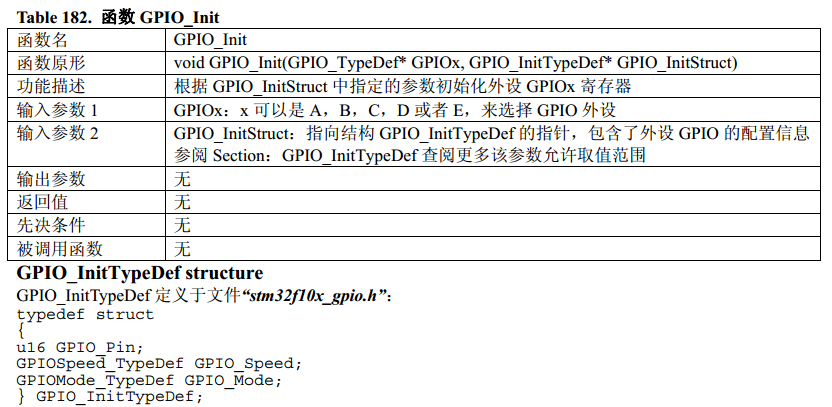
- GPIO_InitTypeDef
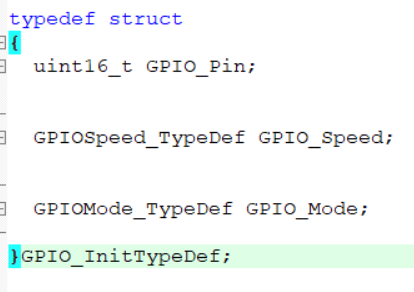
- GPIO_Pin

- GPIO_Speed 和GPIO_Mode
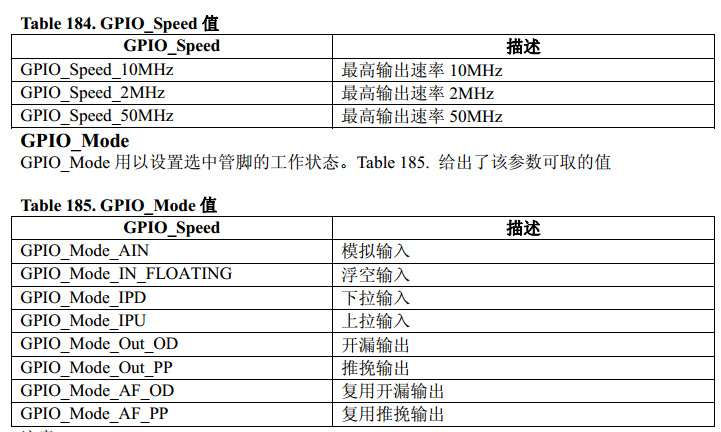
// 开启GPIO时钟
RCC_APB2PeriphClockCmd(RCC_APB2Periph_GPIOA, ENABLE);
// GPIO配置
GPIO_InitTypeDef GPIO_InitStructure;
GPIO_InitStructure.GPIO_Pin = GPIO_Pin_0; // PA0端口
GPIO_InitStructure.GPIO_Mode = GPIO_Mode_Out_PP;// 推挽输出
GPIO_InitStructure.GPIO_Speed = GPIO_Speed_50MHz; // 最高输出速率50MHz
GPIO_Init(GPIOA, &GPIO_InitStructure);
-
**void GPIO_SetBits(GPIO_TypeDef* GPIOx, uint16_t GPIO_Pin);**指定的端口设置为高电平
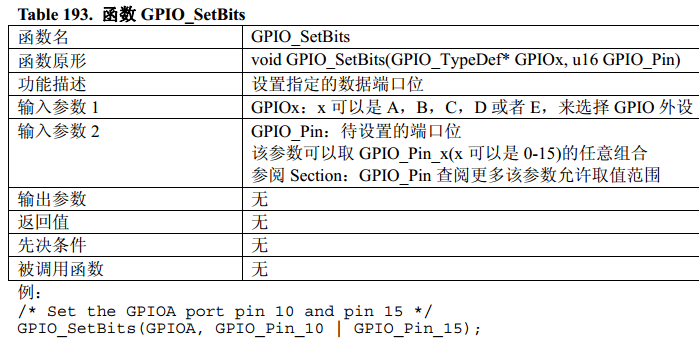
-
**void GPIO_ResetBits(GPIO_TypeDef* GPIOx, uint16_t GPIO_Pin);**把指定的端口设置为低电平
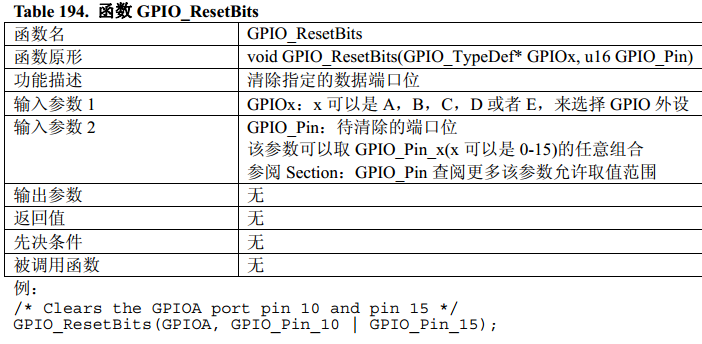
-
**void GPIO_WriteBit(GPIO_TypeDef* GPIOx, uint16_t GPIO_Pin, BitAction BitVal);**
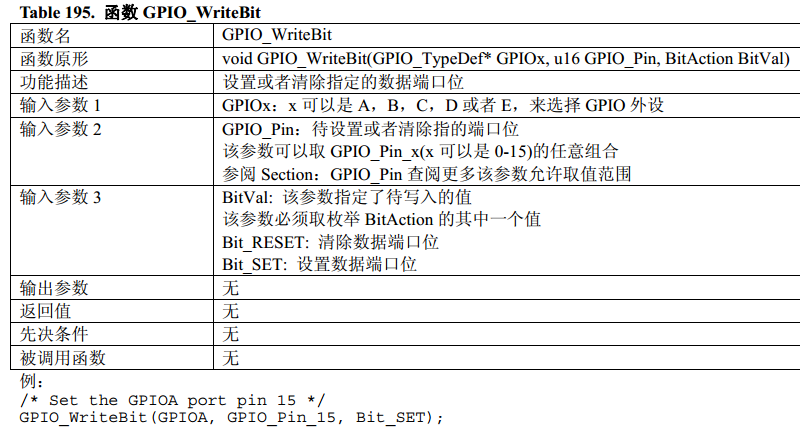
-
**void GPIO_Write(GPIO_TypeDef* GPIOx, uint16_t PortVal);**可以同时对16个端口进行写入操作
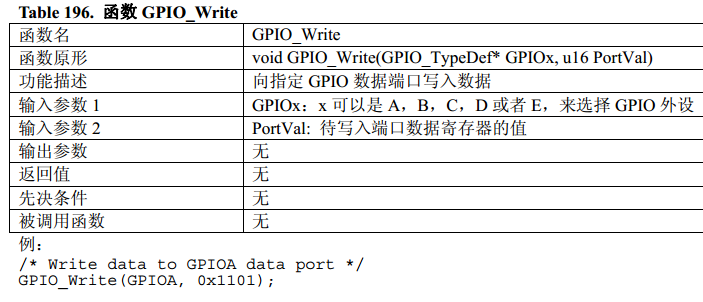
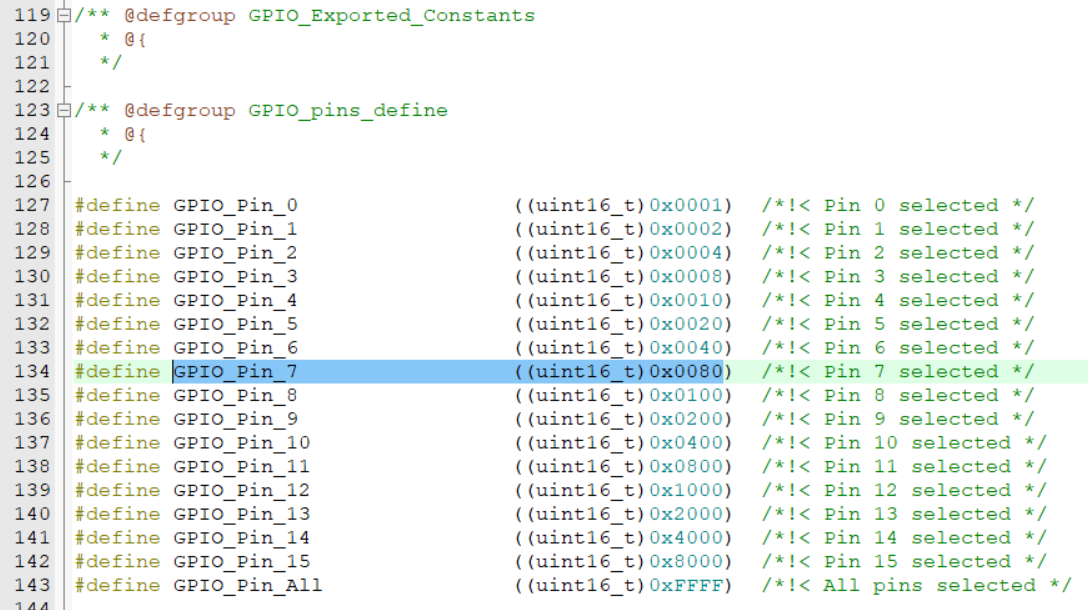
2. 点亮一个LED代码
2.1 硬件连接
LED负极接在PA0端口,因此该LED是低电平点亮。
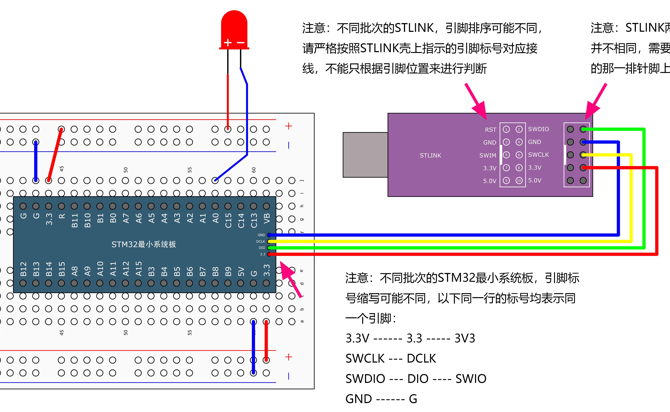
2.2 代码实现流程
- 开启GPIO时钟;
- 初始化GPIO,引脚PA0配置为推挽输出;
- 利用GPIO_SetBits和GPIO_ResetBits设置高低电平,或利用GPIO_WriteBit设置低/高电平
2.3 代码
#include "stm32f10x.h" // Device header
#include "Delay.h"
int main()
{
RCC_APB2PeriphClockCmd(RCC_APB2Periph_GPIOA, ENABLE);
GPIO_InitTypeDef GPIO_InitStructure;
GPIO_InitStructure.GPIO_Pin = GPIO_Pin_0;
GPIO_InitStructure.GPIO_Mode = GPIO_Mode_Out_PP;
GPIO_InitStructure.GPIO_Speed = GPIO_Speed_50MHz;
GPIO_Init(GPIOA, &GPIO_InitStructure);
// GPIO_ResetBits(GPIOA, GPIO_Pin_0);
// GPIO_SetBits(GPIOA, GPIO_Pin_0);
while(1)
{
GPIO_WriteBit(GPIOA, GPIO_Pin_0, Bit_RESET);
Delay_ms(500);
GPIO_WriteBit(GPIOA, GPIO_Pin_0, Bit_SET);
Delay_ms(500);
}
}
3. 点亮流水灯代码
3.1 硬件连接
LED负极接在PA0~PA7端口,因此该LED是低电平点亮。
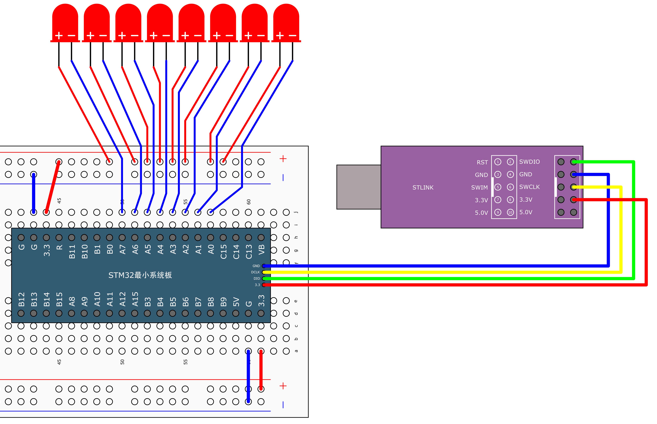
3.2 代码实现流程
- 开启GPIO时钟;
- 初始化GPIO,引脚配置为推挽输出;
- 利用GPIO_Write函数点亮LED。
3.3 代码
#include "stm32f10x.h" // Device header
#include "Delay.h"
int main()
{
RCC_APB2PeriphClockCmd(RCC_APB2Periph_GPIOA, ENABLE);
GPIO_InitTypeDef GPIO_InitStructure;
GPIO_InitStructure.GPIO_Pin = GPIO_Pin_All;
GPIO_InitStructure.GPIO_Mode = GPIO_Mode_Out_PP;
GPIO_InitStructure.GPIO_Speed = GPIO_Speed_50MHz;
GPIO_Init(GPIOA, &GPIO_InitStructure);
while(1)
{ // 因为是低电平点亮,所以引脚号0x0001前加取反符号‘~’
GPIO_Write(GPIOA, ~0x0001); // PA0
Delay_ms(500);
GPIO_Write(GPIOA, ~0x0002); // PA1
Delay_ms(500);
GPIO_Write(GPIOA, ~0x0004); // PA2
Delay_ms(500);
GPIO_Write(GPIOA, ~0x0008); // PA3
Delay_ms(500);
GPIO_Write(GPIOA, ~0x0010); // PA4
Delay_ms(500);
GPIO_Write(GPIOA, ~0x0020); // PA5
Delay_ms(500);
GPIO_Write(GPIOA, ~0x0040); // PA6
Delay_ms(500);
GPIO_Write(GPIOA, ~0x0080); // PA7
Delay_ms(500);
}
}
4. 蜂鸣器代码
4.1 硬件连接
蜂鸣器的I/O口接在PB12引脚,低电平导通。
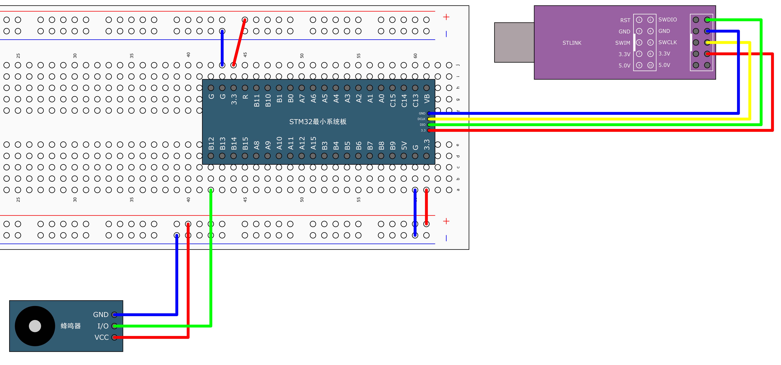
4.2 代码实现流程
- 开启GPIO时钟;
- 初始化GPIO,引脚配置为推挽输出;
- 利用GPIO_SetBits和GPIO_ResetBits设置高低电平,低电平开启蜂鸣器。
4.3 代码
#include "stm32f10x.h" // Device header
#include "Delay.h"
int main()
{
RCC_APB2PeriphClockCmd(RCC_APB2Periph_GPIOB, ENABLE);
GPIO_InitTypeDef GPIO_InitStructure;
GPIO_InitStructure.GPIO_Pin = GPIO_Pin_12;
GPIO_InitStructure.GPIO_Mode = GPIO_Mode_Out_PP;
GPIO_InitStructure.GPIO_Speed = GPIO_Speed_50MHz;
GPIO_Init(GPIOB, &GPIO_InitStructure);
// GPIO_ResetBits(GPIOB, GPIO_Pin_12);
while(1)
{
GPIO_ResetBits(GPIOB, GPIO_Pin_12);
Delay_ms(500);
GPIO_SetBits(GPIOB,GPIO_Pin_12);
Delay_ms(500);
}
}



